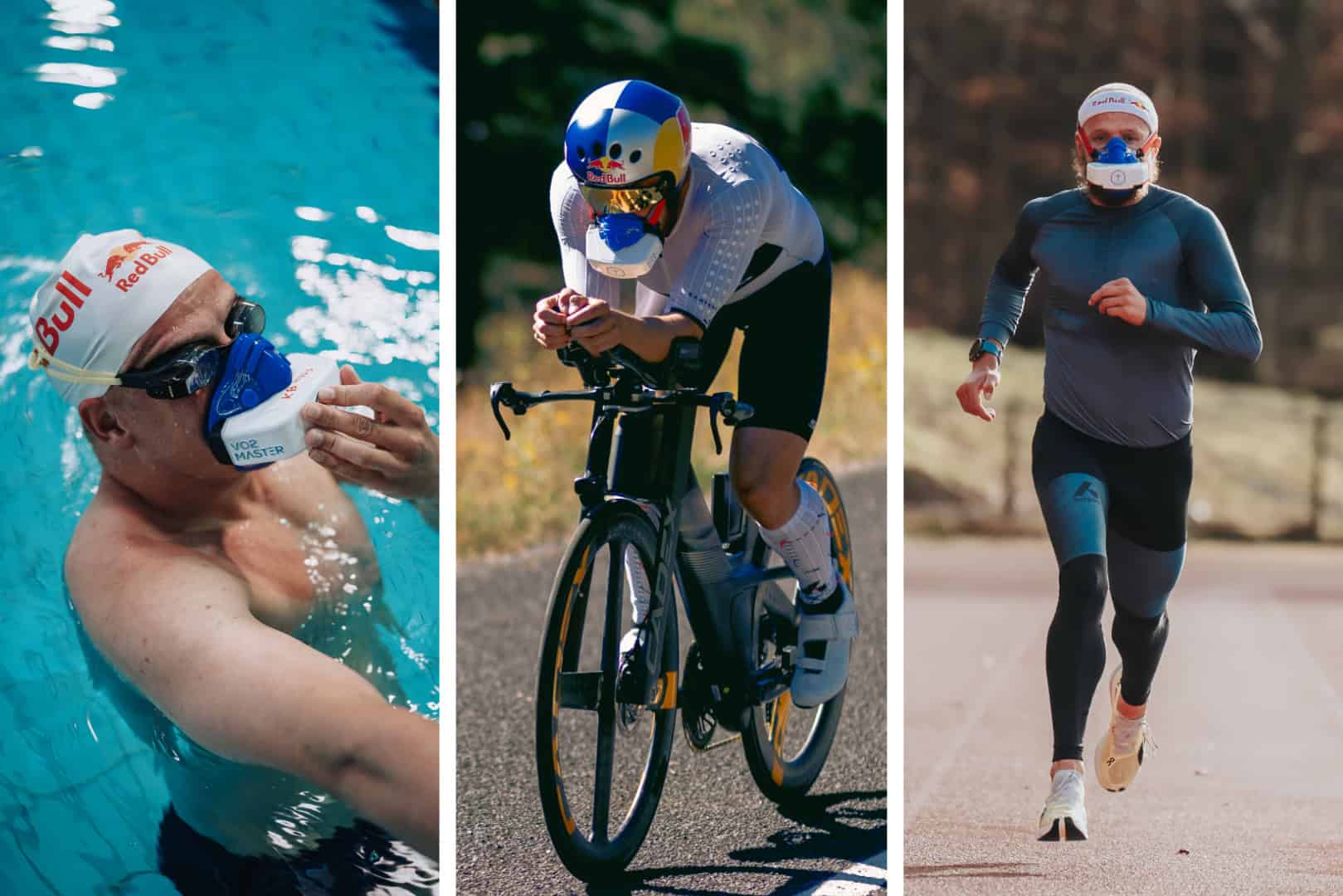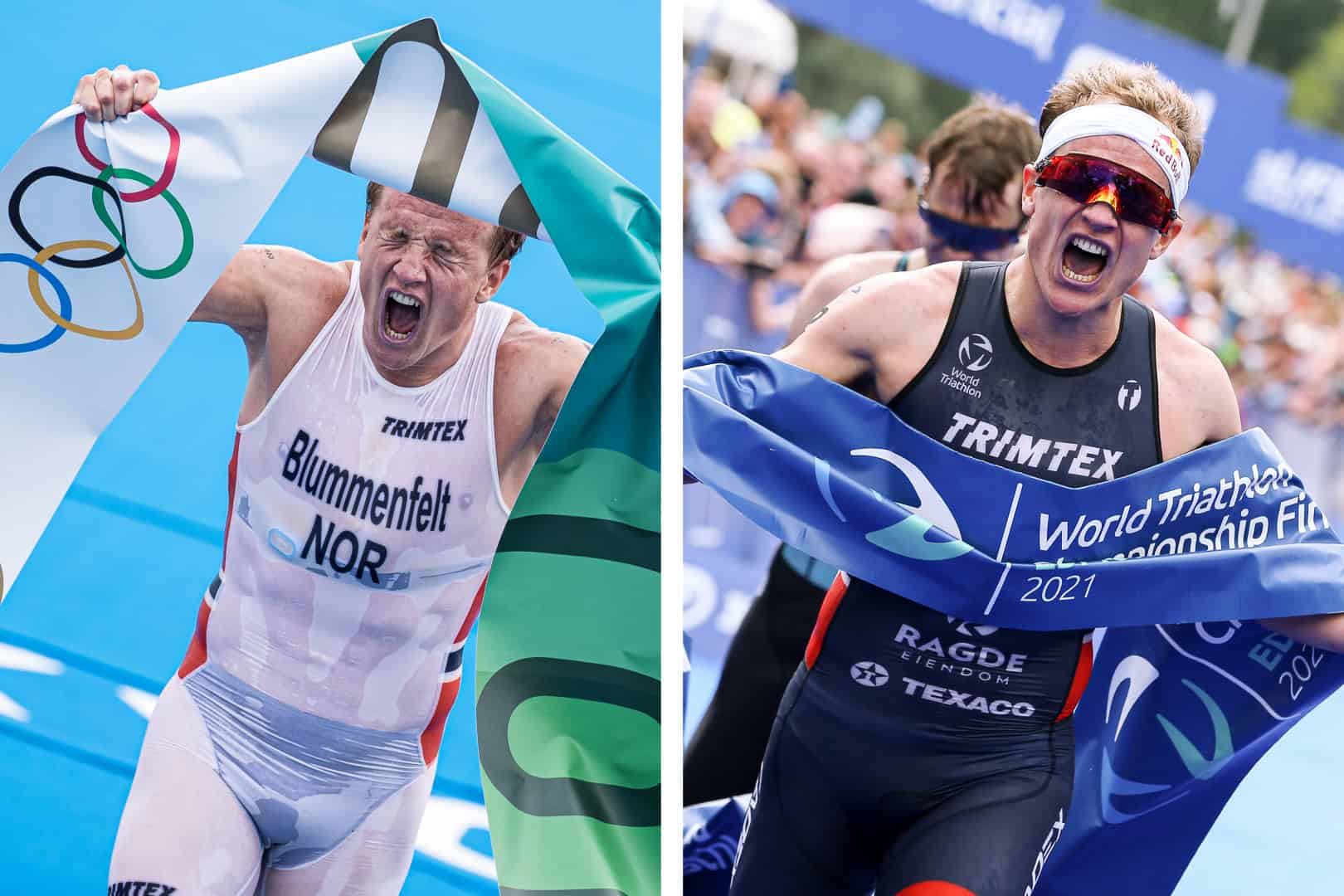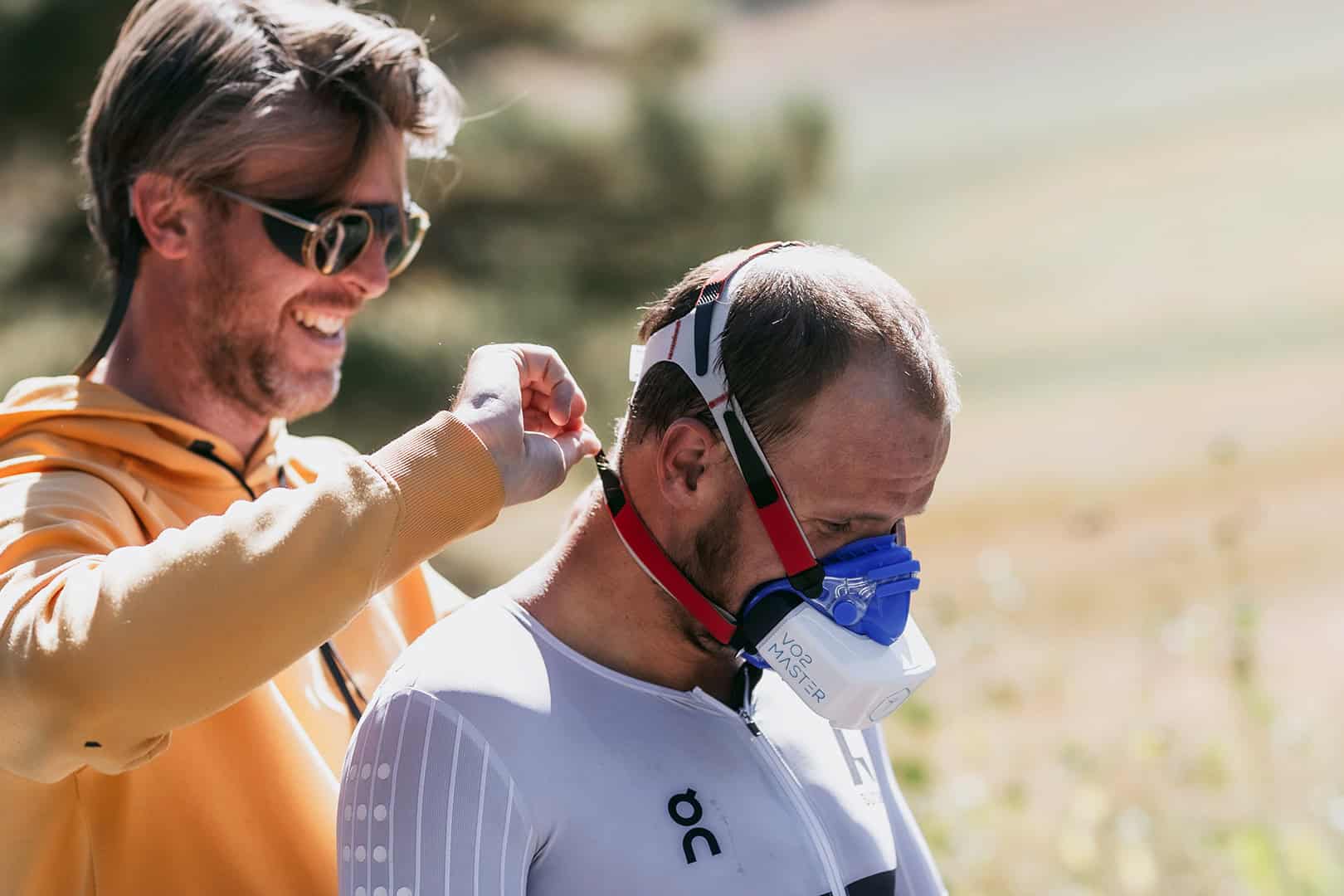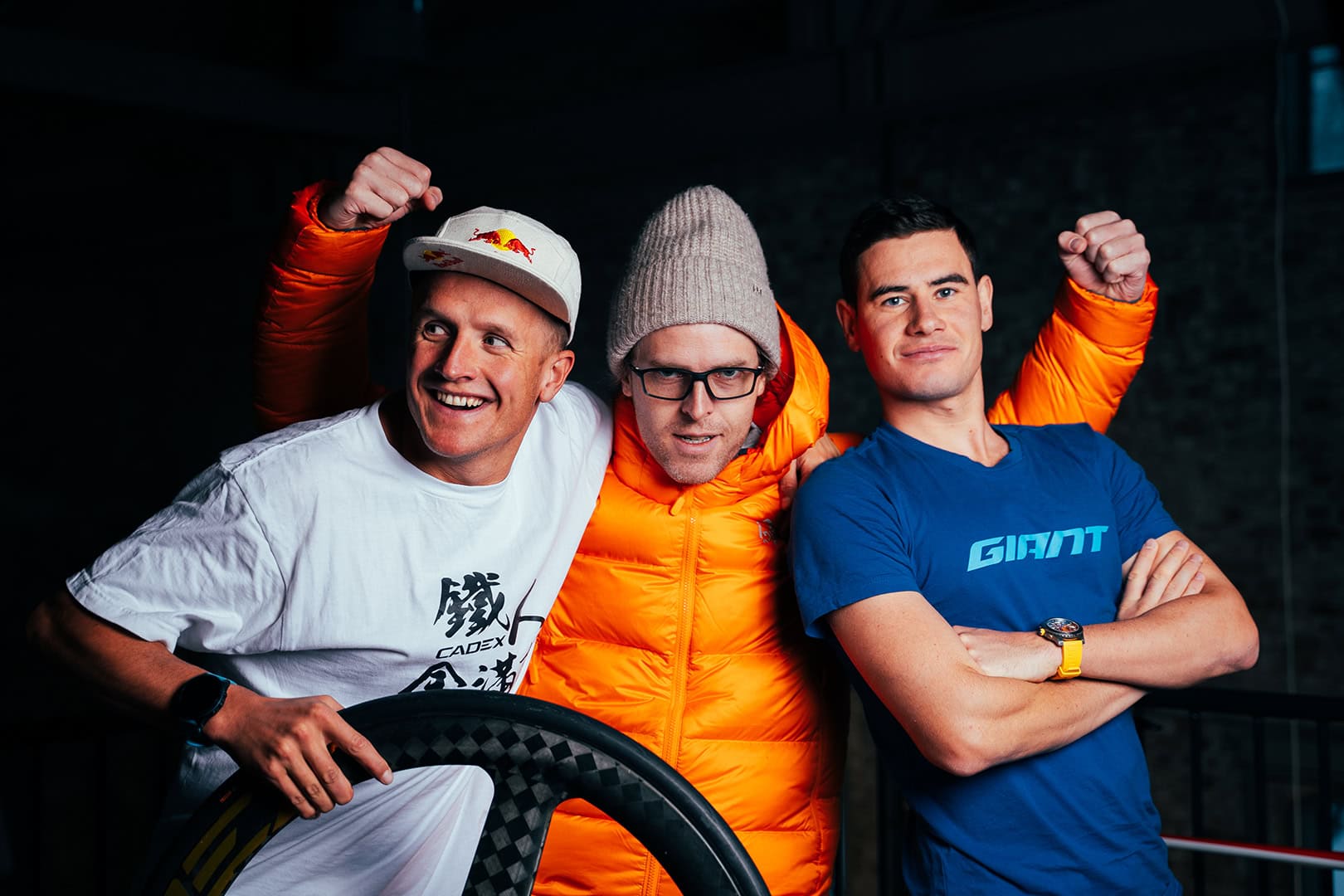Triathlete Kristian Blummenfelt’s Amazing Training Journey from Olympic to Ironman Gold
From Olympic Gold in Tokyo to Ironman dominance across the globe, Kristian Blummenfelt has redefined what’s physiologically possible in endurance sport. His journey isn’t just about medals — it’s about mastering VO2 max, submax and fat oxidation, to conquer two very different racing formats. With the help of field-based metabolic testing using the VO2 Master analyzer, Kristian and his coach Olav Aleksander Bu have fine-tuned his training to push the limits of human performance.

As we approach the 2025 Ironman World Championships, let’s consider the incredible physiology behind Kristian Blummenfelt’s dominance in both the Olympic triathlon and the Ironman World Championship from 2020 through 2022, because what he’s done and is doing now is quite extraordinary.
This year alone, he has won gold in Texas, Aix-en-Provence, and Frankfurt.
But how was this all possible? Let’s explore his physiological journey over the years.
The Varying Demands of Kristian’s Race Resume
Kristian’s Olympic triathlon win (Tokyo 2020) and his Ironman World Championship win (St. George, Utah, 2022) were both massive achievements, even more so because the events themselves are very different in distance, pacing, and demands.

1. Distance & Format
The Olympic Triathlon (Tokyo 2020) consisted of a 1.5 km swim, a 40 km bike ride, and a 10 km run.
This race distance lasts roughly 1 hour and 45 minutes for the top men. It includes a draft-legal bike leg, allowing athletes to ride in packs and employ tactics similar to those used in road cycling.
On the other hand, the Ironman World Championship (St. George 2022) comprises a 3.8 km swim, 180 km bike, and 42.2 km run (a full marathon).
From start to finish, it takes around 7–8 hours for the elite men. Drafting is not allowed on the bike, so pacing and solo effort management are critical.
2. Pacing and Physiological Demands
Olympic-distance triathlons and Ironman races vary significantly in terms of pacing and physiological demands:
- Olympic Triathlon: Higher intensity is, on average, closer to LT2, with breakaways and finishes closer to VO2 max. There’s a high frequency of cornering and accelerations.
- Ironman Triathlon: Intensity is calibrated to carb max and utilization, which sits just below LT1, with some breakaways or overtakes around LT2 on the bike.
These differences require significantly different approaches to training and racing.
3. Strategy and Skills
Like pacing and physiological demands, each of these two race categories also demands different skills to be in focus:
- Olympic Triathlon: Tactically dynamic; positioning in swim/bike packs is key, and the 10 km run often becomes a footrace between small groups.
- Ironman Triathlon: Steadier pacing, heavy focus on nutrition, hydration, and maintaining form over many hours; mental endurance is as important as physical.
This demonstrates that there is no one-size-fits-all approach to triathlon, especially at the world’s highest levels.
4. Recovery and Preparation
There are significant differences in terms of recovery and preparation between these two race tiers. Olympic athletes can race more frequently in a season, whereas Ironman performance requires longer recovery and more months of specific preparation for a single race.
Kristian’s success in both is remarkable because the skill sets overlap only partially. One is more like a middle-distance track race with bikes and swimming, and the other is an all-day ultra-endurance test.
His VO2 max and metabolic efficiency were key factors in allowing Kristian to dominate both distances. That’s where the physiology gets really interesting.
“I started using the VO2 Master analyzer in 2017 to get a better understanding of what’s happening during test sessions and to dial in my energy system for different training distances. I use the VO2 Master to learn how my engine is working and to identify weaknesses that need improvement.”
— Kristian Blummenfelt, Olympic Triathlon and World Ironman Champion

The 4 Keys to Kristian Blummenfelt’s Training
Working with coach Olav Aleksander Bu, Kristian’s training hinged on four essential elements.
1. VO2 Max: The Shared Foundation
Kristian’s VO2 max is among the highest recorded for an endurance athlete and was around 90 ml/min/kg pre-Tokyo Olympics, depending on the training block focus.
In the Olympic triathlon, this means he can sustain efforts very close to his max oxygen uptake for long periods, giving him the horsepower to respond to surges and run fast off the bike.
Olav and Kristian dropped his VO2 max to around 80 ml/min/kg to fine-tune his utilization and efficiency for Ironman.
2. Metabolic Efficiency: Where the Gap Widens
For Ironman, you need to be able to oxidize fat efficiently at high percentages of your VO2 max to spare glycogen.
Testing that Blummenfelt’s fat oxidation stays high deep into his intensity range, meaning:
- He delays glycogen depletion
- He needs fewer carbs per hour than most elites to sustain the same power
This “dual fuel” capacity lets him push closer to Olympic-level pacing in an Ironman without bonking.
3. Lactate Threshold and Durability
Kristian’s lactate threshold will vary greatly depending on whether it is Olympic or Ironman and whether it is swimming, biking, or running.
It was around 85% pre-Tokyo.
That’s because they couldn’t focus solely on sustained efforts because of the breakaways and attacks, and thus great variation in efforts.
Durability is a subcategory that gets increasing focus when capacity becomes a problem.
This is not the case in Olympic distance triathlon, and the term holds better relevance in running the Ironman.
In Ironman, this is why his marathon pace stays steady: his muscle damage and central fatigue buildup are both remarkably low.
“We needed a technology that was accurate enough, that was repeatable enough we could trust the data that came in and allowed us to assess them out in the field, and get big data. The sheer amount of data that we could now collect on them would now bring a far higher accuracy and repeatability of their condition and day-to-day changes than we ever had before. One of the things we saw from Rio to Tokyo in Kristian, Gustav, and Casper is their performance increasing by 19% on average, and today it’s still increasing because of knowing where to prioritize your training.”
— Olav Aleksander Bu
4. Data-Driven Training with VO2 Master
Kristian, his coach for many years, Olav Aleksander Bu, and Norwegian teammate Gustav Iden, World Champion Ironman 2023, have used frequent, in-field metabolic testing with the VO2 Master analyzer for accurate data capture.
This began in 2017 with the goal to gain key metrics in the field, testing at home or on the road to fine-tune zones, fueling, and recovery. The testing occurs during swimming, biking, and running training for test-retest metabolic data to see recovery, adaptation to conditions, and equipment.
Kristian has also tested breathing efficiency for different bike positions, shoes, altitude training effects, and more.
This lets him push the boundary from Olympic-intensity training to Ironman endurance prep without burning out.
The model Olav works with is “input-output. True input is oxygen mixed with substrate, and true output is time over the distance.”
Blummenfelt’s edge comes from max engine size (VO2 max) and efficient fuel use. Olympic racing rewards the first two hours of that power; Ironman rewards the ability to keep using that power after six hours without imploding. He’s mastered both.
Written by: Nancy Phillips, Kinesiologist, MBA. Reviewed by Olav Aleksander Bu.
Want to learn how you can train triathlete clients with the same tools and data used by world-class Olympic and Ironman athletes? Book a free live demo with our team of in-house experts today.



